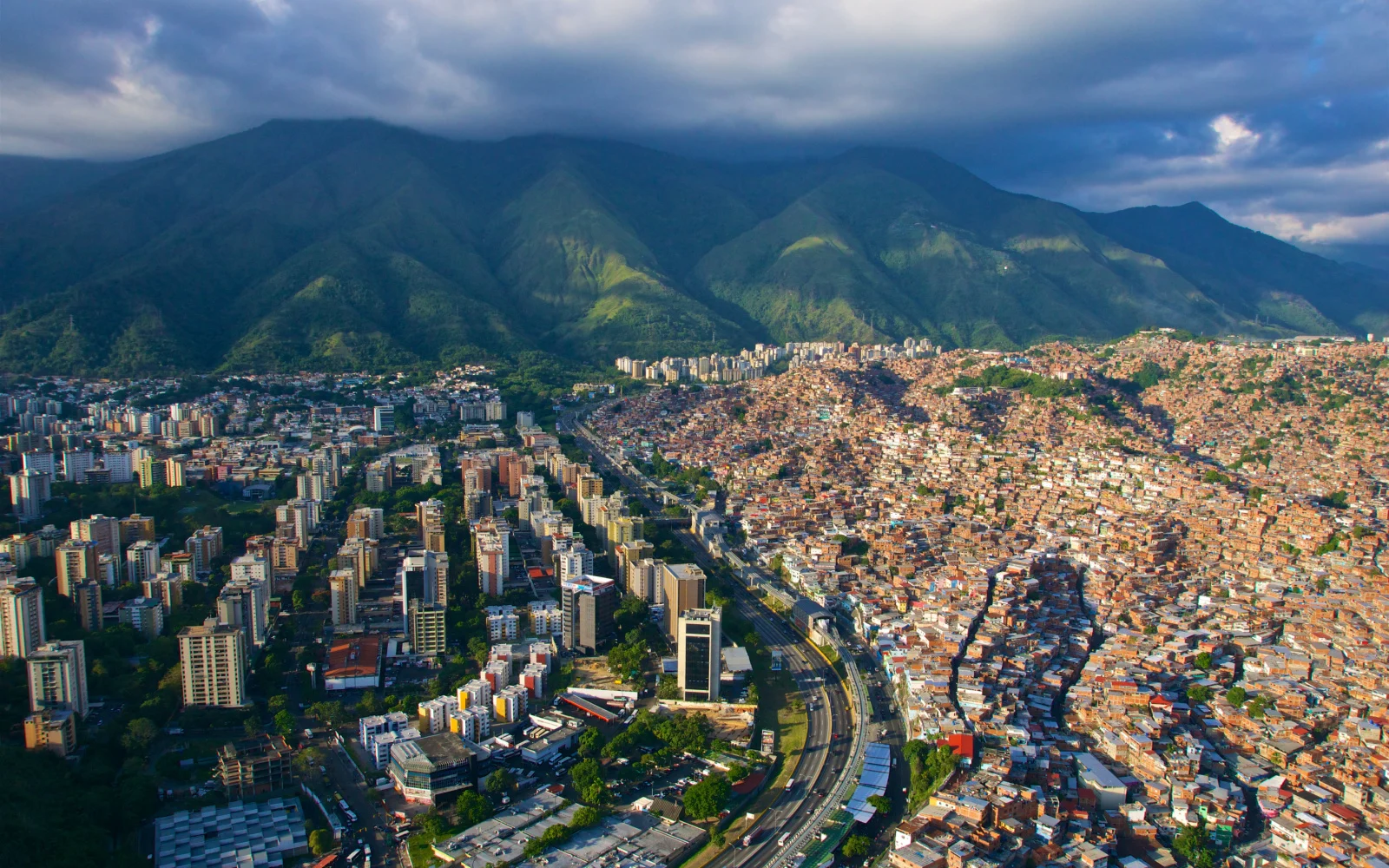The “Bolivarian Republic of Venezuela” is the official name of the Venezuelan land. It adopted its first constitution in 1999, and its nickname is the “Land of Grace.”
Venezuelans predominantly speak Spanish in this country, and Christianity is its major religion. We have 25 interesting and fun facts about Venezuela for you to view, some of which you may not have expected.
25 Fun Facts About Venezuela
We offer data about some of the most majestic Venezuelan sightseeing spots and information about its history and culture. However, we wouldn’t say all the facts we learn about this land are “fun.”
Unfortunately, some of the “interesting” information we found concerning Venezuela is quite tragic. You’ll find out soon enough why this may be one of the most bittersweet places in the world to appreciate.
1. You will find the world’s tallest waterfall in Venezuela
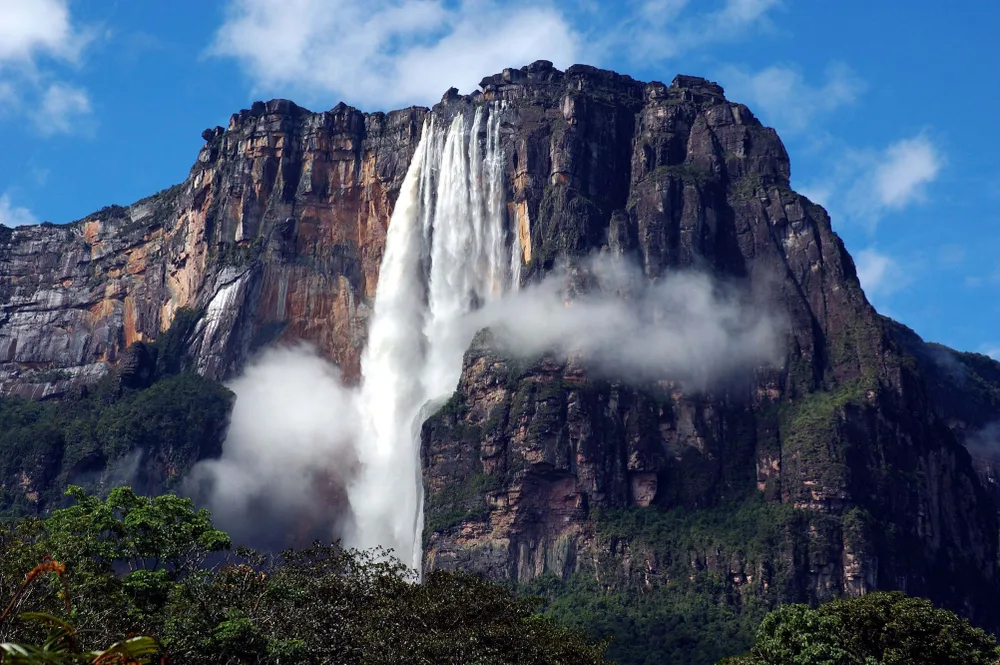
alejojimenezyt/Shutterstock
In Venezuela, you will find Angel Falls, known as “Kerepakupai Merú.” It’s the world’s tallest waterfall, and it’s located east of the Caroni River.
Kerepakupai Merú measures a drop totaling up to 3,212 feet (979 meters). The name of this waterfall comes from the ingenious Pemón people, and it means waterfall of the “deepest” or “highest” place.
2. Unfortunately, this beautiful country is dangerous
Venezuela offers so much to be desired sight-seeing-wise. Besides Angel Falls, the country has the Amazon Rainforest, Mount Roraima and the Orinoco Delta. Pay attention to travel reports concerning violent crimes though.
For United States citizens, the government has placed a Level 4 Do Not Travel Advisory in both 2019 and 2023. This is the highest warning level you could receive from the U.S. Embassy, so beware.
3. Plenty of beauty pageant winners come from Venezuela
At least six Miss World winners came from the country as of 2017. These include Susana Duijm (1955), Pilin Leon (1981), Astrid Carolina Herrera (1984), Ninibeth Leal (1991), Jacqueline Aguilera (1995) and Ivian Sarcos (2011).
As reported in 2023, at least seven Miss Universe winners also originated from Venezuela.
They include Maritza Sayalero (1979), Irene Sáez (1981), Bárbara Palacios (1986), Alicia Machado (1996), Dayana Mendoza (2008), Stefanía Fernández (2009) and Gabriela Isler (2013).
4. Guns are not the only danger in some areas of Venezuela
Sadly, the country made the top 6 list of places where the most gun deaths occurred in 2016. At this time, more than 50% of these firearm tragedies occurred in Venezuela, Brazil, Mexico, Colombia, the United States, and Guatemala.
If you do go to Venezuela, you do have more to watch out for besides guns though. For instance, you have to take caution while driving.
One of the most dangerous roads in Venezuela is the path to Los Nevados in the Sierra Nevada National Park (Meridia, VE). Landslides and heavy precipitation can occur at any moment here.
5. The most oil reserves come from VE
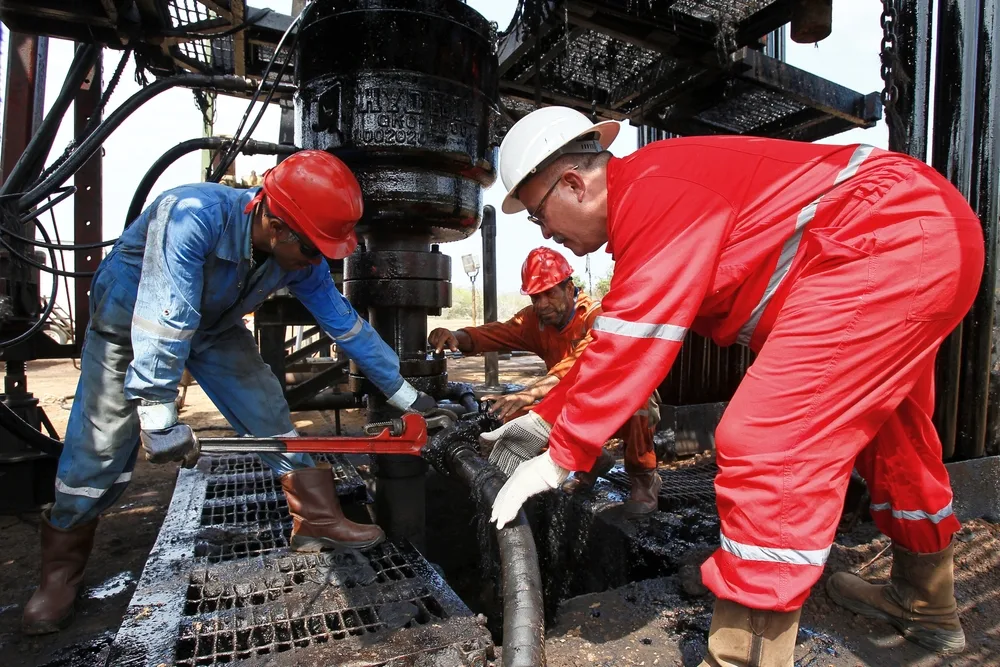
LAGUNILLAS-ZULIA-VENEZUELA 20-13-2015- Worker from Venezuela´s State Oil Caompany, Pdvsa conduct fracking operation in an oil field at dawn. JOSE ISAAC BULA URRUTIA./JBula_62/Shutterstock
With three out of four Venezuelans living in poverty as of 2021, you can’t help but empathize with them. Perhaps this country would not have survived at all if it hadn’t been for its largest oil reserve in the world.
About 90% of its exports include petroleum as reported in 2019.
They have about 303.2 billion barrels stored by the end of 2017. They don’t have as advanced means of production as the rest of the world, however, which is one reason some areas of VE are still poor.
6. Get in line for cheap gasoline in Venezuela
Venezuela isn’t quite as cheap as it used to be for petrol fuel. However, it still comes in as the third least expensive place to stand in line and fill up your gas tank as of September 2023. In case you’re curious and are from the U.S., USA comes in at 42nd.
That’s not as expensive as in Hong Kong, which is the most expensive on the list of 168 countries evaluated. Still, the USA comes in as much steeper for petrol fuel costs than for Venezuelans.
7. Would you look at the size of some of Venezuela’s rodents?
If you don’t want to see a rodent that measures more than one meter, (more than four feet) I don’t blame you. At about 65 kilograms (more than 143 pounds), you wouldn’t die from it sitting on you.
Still, we don’t think being stuck under a rat as giant as a human would be much fun. It’s small enough to push off us, maybe, but still not fun. The good news is, it’s actually cuter than your standard rodent – the appearance of a miniature camel with no tail or hump.
8. VE is one of the most electric places on earth
If we didn’t know any better, we would have told you that the “Electric Avenue” song by Eddy Grant was about The Maracaibo Beacon. The “Beacon” is where Lake Maracaibo connects with the Catatumbo River.
At the Beacon, lightning strikes about 250-300 days out of the year. It flashes up to approximately 28 times per minute for up to nine hours straight.
“Electric Avenue” wasn’t written for the Maracaibo Beacon. However, Earth Data by NASA still calls this Venezuelan location the “most struck place on Earth.”
9. Half of its amphibians are native to the country
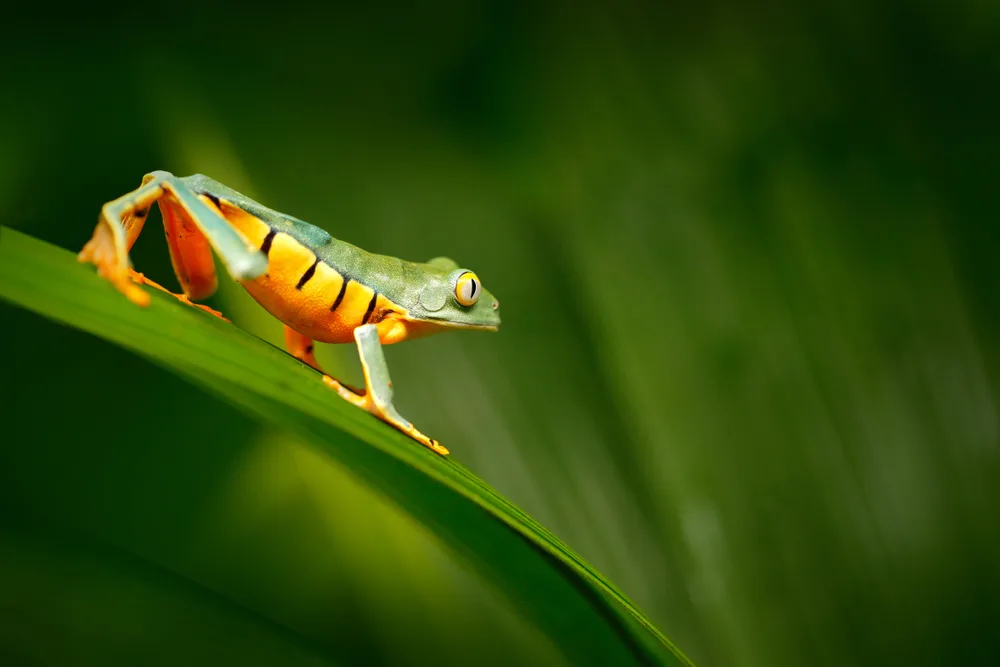
Ondrej Prosicky/Shutterstock
Venezuela has amphibian creatures you would only see if you ever had the chance to cross this country’s borders. They total about half the animals in this class located in VE.
As of 2017, some endemic amphibia found in Venezuela include the following: Werner’s Toad, Giant Glass and Yellow-Banded Dart Frogs, and possibly dozens of other frogs. The Guaramacal and Nauta Salamanders also come from VE.
10. Caracas is home to one of the largest former “squatting” spots
Up to 5,000 people illegally inhabited the abandoned Confinanzas Financial Center in the capital city of Caracas, Venezuela. This 45-story building was also known as the “Tower of David slum.” Its primary investor died in 1993.
The most people “squatting” at one time in the Tower of David was about 2500-3000 on average. This started in 2007 and continued until the squatters were directed to new residences in 2014.
11. 1981 Miss Universe winner demonstrates exceptional value beyond exterior beauty
The 1981 Venezuelan Miss Universe winner Irene Sáez ran for political office. She became both a mayor and a governor.
It’s too bad she lost the presidential candidacy. However, that defeat doesn’t negate the value she has beyond her exterior beauty when working toward world peace.
12. An old mall in Caracas eventually turns into a torture chamber
Yikes! This is disturbing but still interesting. How the unfinished Helix building in Caracas became a torture chamber after being a homeless shelter, we don’t know.
However, we suspect that the progression started from transforming this place into a prison. Apparently, the transformation happened sometime after the Helix also became a police headquarters site.
As of 2017, the concrete of this political prison known as “hell on earth” is crumbling. It’s far from becoming the shopping mall originally intended for this spot in the 1950s.
13. VE is one of the top 17 most bio-diverse countries
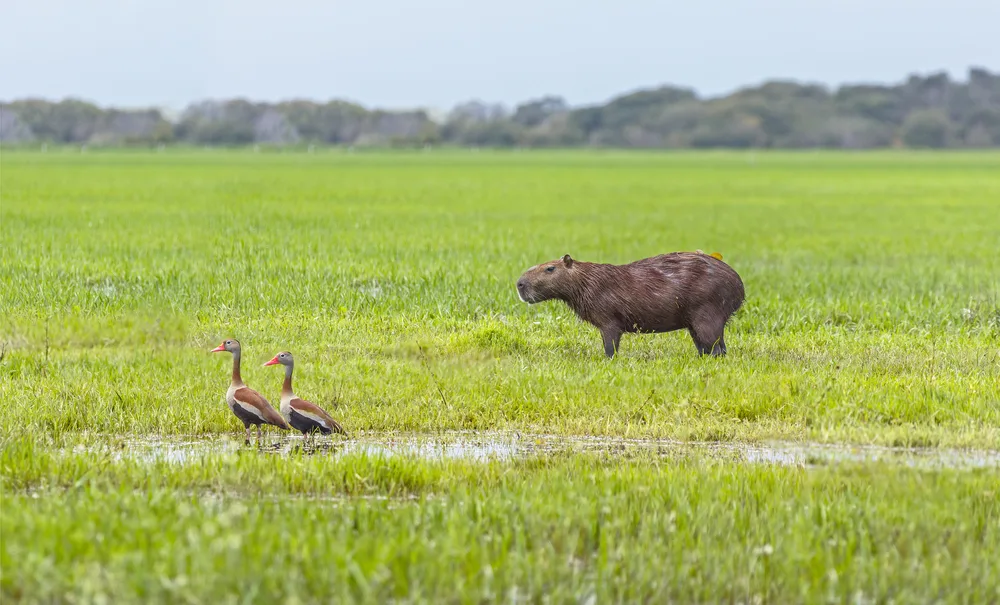
Vadim Petrakov/Shutterstock
Venezuela’s biodiversity rating varies from about the top 11 to the top 17. Several factors, such as species observed, research timing, and the current climate conditions affect VE’s rating.
One area where you might find the most variety of creatures is on the Isle of Margarita. If allowed to enter VE in the future, you may want to check out the Chacaracual Community Conservation Area here.
Besides amphibians and reptiles in VE, you’ll also find more than 1,300 species of birds. The number of orchid species totals at least 1,500. The complete plant species count is about 21,000, with about 2900 of those being endemic (native) to the country.
14. Can you even travel to Venezuela right now?
As of 2023, you might not be able to enter the country of Venezuela at all. That’s a shame. It’s not that you’re forbidden depending on where in the world you come from.
However, the U.S. Embassy advises you not to as of July of this year. Maybe 2024 will be better for traveling to VE. We can hope anyway.
15. Can you guess what Venezuela’s national sport is?
Bullfighting was traditionally the Venezuelan national sport. However, both soccer and baseball became national sports for Venezuela to enjoy.
By the way, the type of bullfighting where the bull is thrown by the tail is declining in popularity here. What’s more, VE baseball players have often gone to the North American Major League.
16. Venezuela’s unemployment rate seems better but still high
Venezuela’s unemployment rate is significantly low by 2023 at about 5.3%. However, that’s still about two percentage points higher than in the United States this same year.
On the other hand, the unemployment rate for VE in 2003 for the country was more than 16%. For Venezuelans, the job outlooks are definitely much better after about 2006 but fluctuate between 5-7% from 2007-2023.
17. They don’t want any “Simpsons” in the country – or Coke Zero
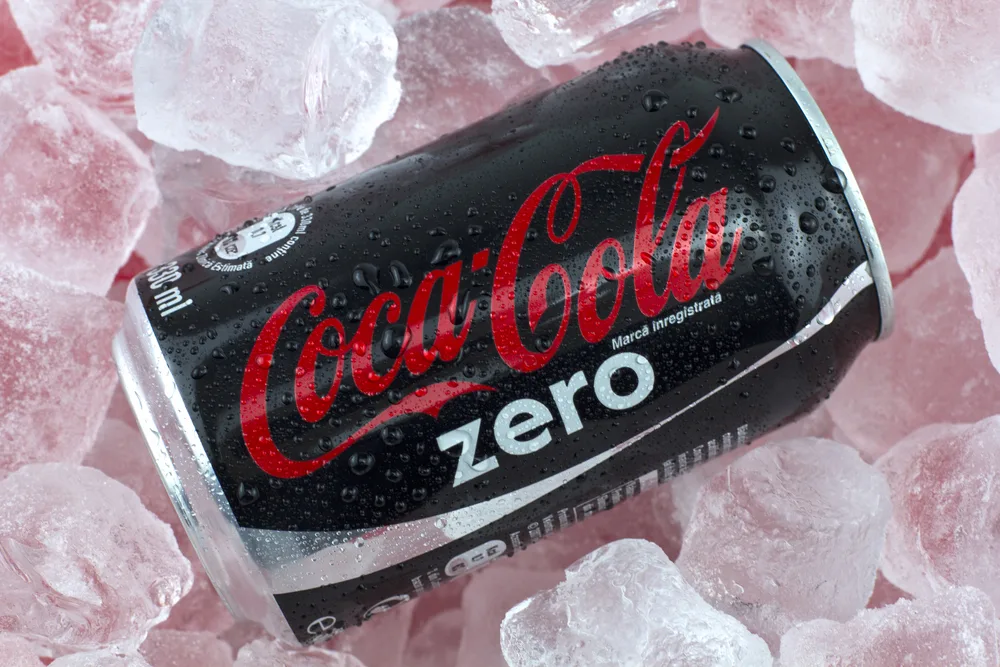
BUCHAREST, ROMANIA – March 17 , 2014:330ml Coca-Cola Zero Bottle Can On ice./Constantin Iosif/Shutterstock
The Simpsons show is banned in Venezuela as of 2008, and so is Coke Zero by 2009. We understand that the storylines may be considered “too much” for the children.
Coke Zero apparently is not as good for the health as we thought it might be either. Is there a double penalty if you’re caught doing both of these things at the same time?
That’s what we want to know. We would assume that it’s the producers and sellers who would be in trouble, not the people watching or consuming either the TV show or the soda.
18. Not just any person can buy baby products in Venezuela
We’re not sure if this is still the case in 2023. However, severe diaper shortages in Venezuela in 2016 brought on severe rations for desperate times. At this time, you needed either a birth certificate or a sonogram indicating that your child is yours.
We wonder what if the child is adopted? Hopefully, the legal system accounts for that if this restrictive measure is still in place as of 2023 or more recently.
19. Venezuela became the world’s most dangerous country
By 2018, CNN reported Venezuela being the most dangerous country in the world for the second year and a row. By 2023, World Population Review announced that Venezuela has the fifth-highest murder rate in the world.
The study of the most dangerous countries occurred in 2017. However, some reports suggest that this VE data came from as early as 2015. Besides murder rates, country danger ratings usually figure in how people feel in their surroundings and theft crimes.
20. Despite being the most dangerous country, no death penalty exists
Venezuela became the first country to abolish the use of the death penalty to punish criminals. The current Constitution of the Republic also prohibits taking someone’s life as punishment for a crime.
President Juan Crisostomo Falcom is attributed to this death penalty abolition. This took place in 1863.
21. It’s full of fungi
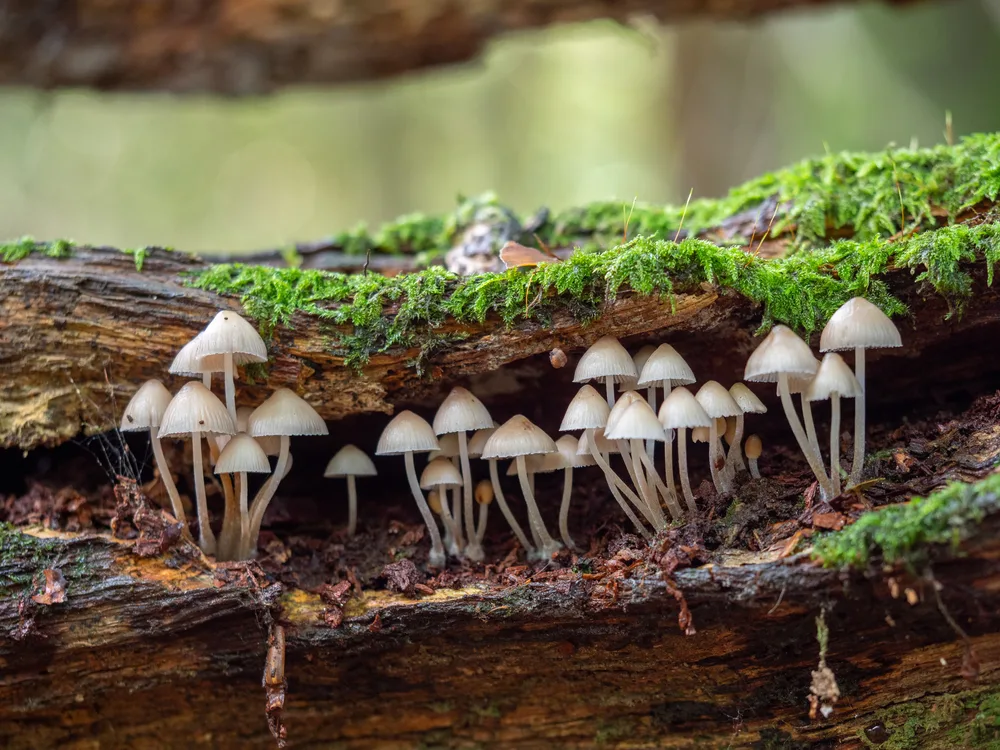
Stephan Morris/Shutterstock
Venezuela has possibly 3,900 or more species of fungi in it. This makes up for about 2.8% of the confirmed presence of at least 135,000 species found in the world.
If this sounds scary, don’t worry. A majority of them are harmless to humans. It’s believed that up to 200 of these species are edible.
22. Venezuelan people speak dozens of languages besides Spanish
Spanish became VE’s official language in 1999. However, evidence supports indigenous people speaking their own tongue.
An estimated 35-40 languages exist in Venezuela possibly spoken within 50 indigenous groups. Two other popular languages besides Spanish include English and Portuguese.
23. Who can withstand VE’s exorbitant inflation rate?
The highest inflation rate increases for places in the world occurred in 2023. However, none beat the estimated 249-398% consumer price spikes in Venezuela this same year.
The highest reported VE inflation rates totaled more than 400% before July 2023. Consumer prices back in 2013 had only risen about 60% from 2008. Wow, what a difference.
24. Celebrate with underwater exploration if you dare to enter VE
Travel to Venezuela is dangerous but not necessarily forbidden. If you make it there, celebrate with underwater exploration in Los Roques. It’s supposed to be one of the best places to scuba dive on Earth.
Los Roques has spectacular coral reefs and a lagoon measuring 400 square meters (more than 154 square miles). Above ground in Los Roques doesn’t sound bad either. This land consists of about 280 islands and white sand.
25. If you ever are able to visit, you won’t be short on beaches
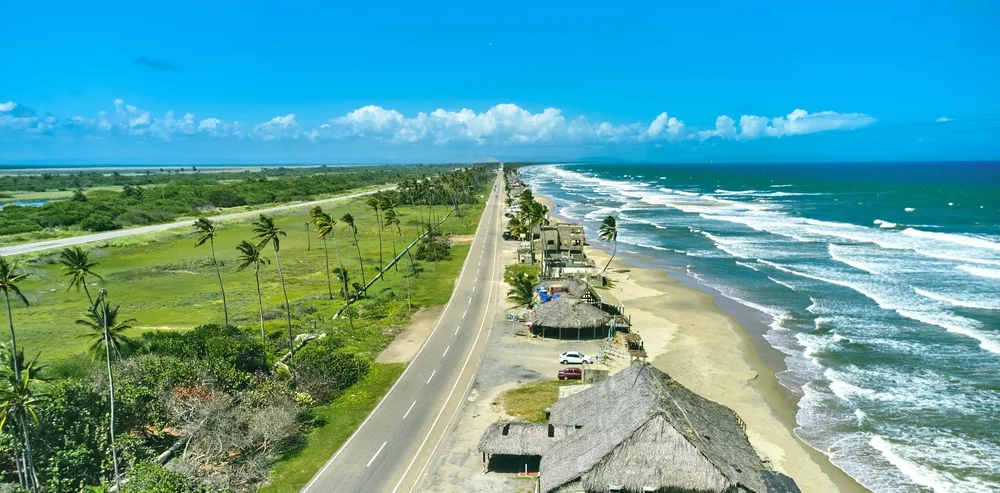
rjankovsky/Shutterstock
If you find that you can safely enter Venezuela, you won’t have a problem finding a beach. Go to Isla de Margarita first.
On Margarita Island, you will find Punta and Parguito, Cruz, El Yaque and other beaches. The 171-kilometer (more than 106 miles) of coastline won’t leave you wanting for sun, sand and water.
Frequently Asked Questions
What is Venezuela most known for?
It’s probably most known for being home to Angel Falls, the highest waterfall in the world.
What is Venezuela’s favorite dish?
One of the country’s favorite foods is the pabellón criollo, cited to be Venezuela’s national dish. It contains black beans and rice with shredded beef. You can add fried plantains or a fried egg as a side.
What do people in Venezuela eat for breakfast?
They may eat an arepa, which is baked cornbread filled with cheese, beef, fish or chicken. They also might have cachitos, which are crescent bread rolls filled with ham and cheese.
The perico dish made with scrambled eggs often has ham and cheese in it. This breakfast food is seasoned with herbs.
What is the best thing about Venezuela?
For a country as dangerous as it supposedly is, Venezuela has a diverse group of creatures and plants living within it. A large percentage of the plants and animals living here came from here.
Where in Venezuela is safe?
It seems in 2023 that nowhere in the country feels safe. However, Margarita Island, Los Roques and Canaima National Park are some of the less dangerous or more secure places to go.
Over to You — Book Your Trip to Venezuela Today!
So, with so much to see and do, what are you waiting for – book your trip today and experience for yourself all that Venezuela has to offer. Happy travels!



